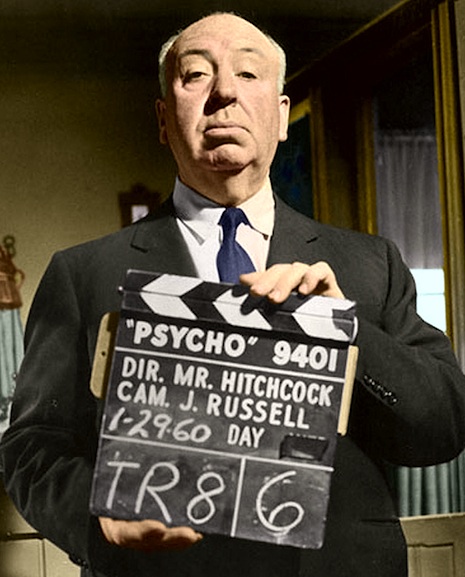Alfred Hitchcock thought the invention of “talkies” was unfortunate as movies assumed a theatrical form overnight. Films, he told Francois Truffaut, stopped being cinematic and became “photographs of people talking.”When we tell a story in cinema, we should resort to dialogue only when it’s impossible to do otherwise. I always try to tell a story in a cinematic way, through a succession of shots and bits of film in between.Hitchcock developed this theme in an interview with director Bryan Forbes at London’s National Film Theatre in 1969, where he explained how work on a movie “starts” for him:
In writing a screenplay, it is essential to separate clearly the dialogue from the visual elements and, whenever possible, to rely more on the visual than on the dialogue. Whichever way you choose to stage the action, your main concern is to hold the audience’s fullest attention.
Summing it up, one might say that the screen rectangle must be charged with emotion.
Well, for me, it all starts with the basic material first. Now, the question of when you have the basic material… you may have a novel, a play, an original idea, a couple of sentences and from that the film begins. I work very closely with the writer and begin to construct the film on paper, from the very beginning. We roughly sketch in the whole shape of the film and then begin from the beginning. You end up with around 100 pages, or perhaps even more, of narrative, which is very bad reading for a litterateur. There are no descriptions of any kind—no ‘he wondered’, because you can’t photograph ‘he wondered.’This is is what Hitchcock called “pure film”
No ‘camera pans right’, for example
Not at that stage, no. It’s as though you were looking at the film on the screen and the sound was turned off. And therefore, to me, this is the first stage. The reason for it is this—it is to urge one to, to drive one, to make one work purely in the visual and not rely upon words at all. I am still a purist and I do believe that film is a series of images projected on a screen. This succession of images create ideas, which in turn create emotion, just as much as in literature words put together form sentences.
The point is that pure film is montage, which is the assembly of pieces of film, which in their turn must create an emotion in the audience. That is the whole art of the cinema—the montage of the pieces. It is merely a matter of design, subject matter and so forth. You can’t generalise about it. You can only hope to produce ideas, expressed in montage terms that create an emotion in an audience.Hitchcock was a cinematic purist—which ultimately made him a control freak. Everything was planned and worked out long before the actors rehearsed their lines or the first shot was taken. “Actors,” Hitchcock once said in his famously quoted line, “should be treated like cattle.” They were there to collaborate and serve his vision. That’s why he preferred working with actors like James Stewart or Cary Grant rather than “method” actors like Montgomery Clift or Paul Newman. Indeed, during the making of Torn Curtain, Hitchcock became so fed up with Newman continually asking about his motivation that he eventually told him, “Your motivation is your salary.”
The method actor is okay in the theatre because he has a free space to move about. But when it comes to cutting the face and what he sees and so forth, there must be some discipline. I remember discussing with a method actor how he was taught and so forth. He said, “We’re taught using improvisation. We are given an idea and then we are turned loose to develop in any way we want to.” I said “That’s not acting. That’s writing.” And that is why method actors today always turn up on set with a new script.Hitchcock’s interview with Bryan Forbes was originally broadcast as an hour-long program on the BBC, but this edited version highlights the great auteur’s wit and wisdom on filmmaking.
It's in my eyes, and it doesn't look that way to me, In my eyes. - Minor Threat
Friday, April 17, 2015
Hitchcock 101: Alfred Hitchcock on how to make movies
from Dangerous Minds:

No comments:
Post a Comment